Schilling & Sons: Pinblock work
Category: Shop WorkDate: 2020-07-20
As noted in the previous post, the pinblock in this piano had separated from the back posts. Previously, a repair had been attempted by boring through the pinblock and bolting the block to the back posts. While the piano was unstrung, I used the existing bolts to close the gap further, and then inserted low-viscosity epoxy into the gap for a solid composite construction.
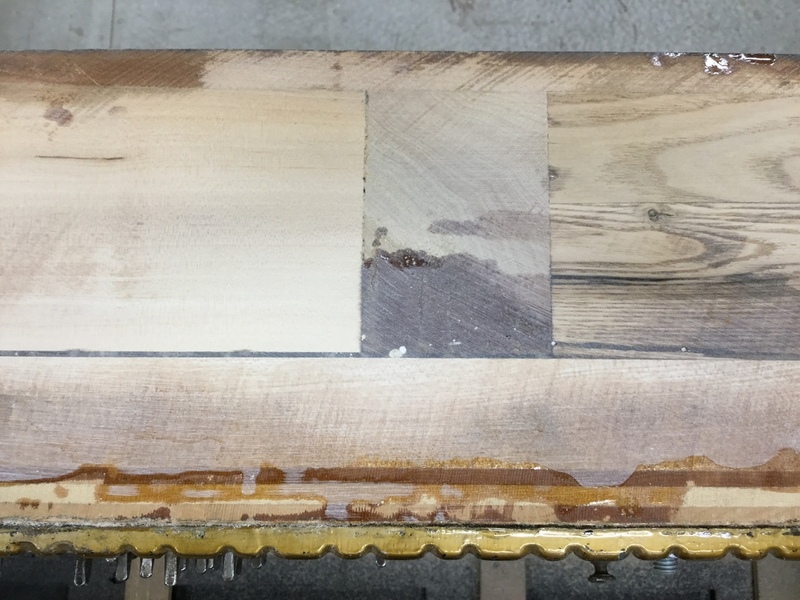
This was the first time for me to do this procedure, and a bit of a learning experience, because epoxy ran in directions I did not anticipate. While working at the back of the piano and monitoring drips there, I did not anticipate epoxy running out through the tuning pin holes. The photo below shows my corrective actions after discovering the mess. I first inserted ear plugs, then realized that the old tuning pins would also stem the flow.
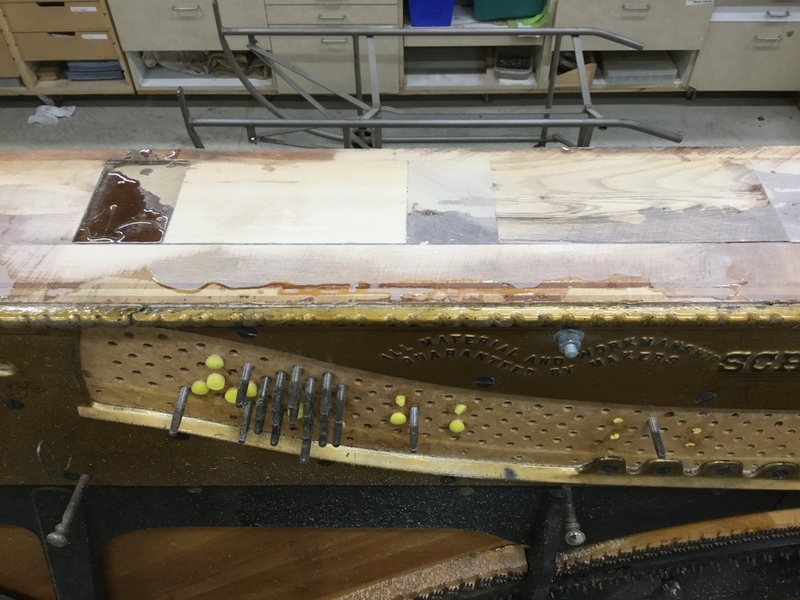
The epoxy flowing through the tuning pin holes wasn’t really a big issue, since it was my intention to restore this pinblock by filling pinblock holes with epoxy and then re-boring. This also was a process I had not previously used. In theory this will result in tight fitting pins of uniform torque, without resorting to oversized pins — or replacing the pinblock. I’m pleased to be using this technique for this piano, since I’ll be seeing the piano regularly in the future: this is an unpaid project for the family. I feel free to experiment! The photo below shows the pinblock with this epoxy fill complete.
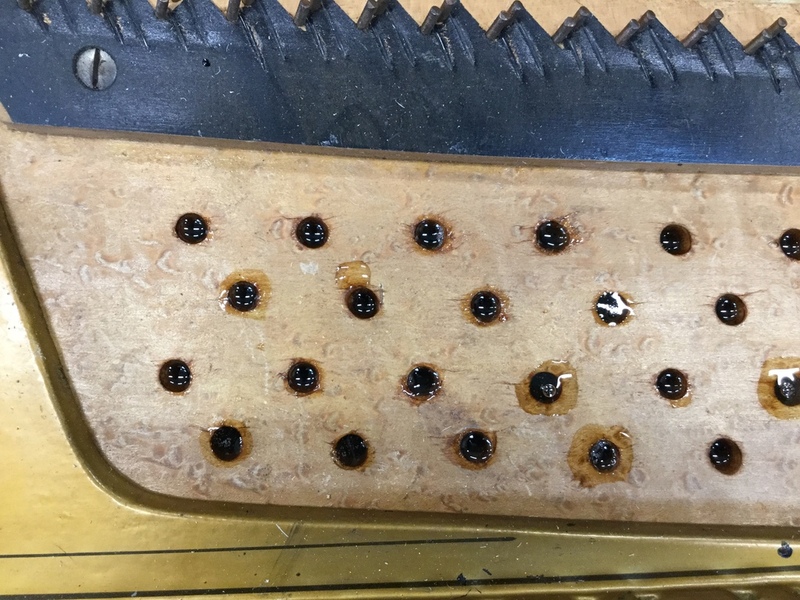
Following the fill of epoxy, I let it cure for a week before reboring. To achieve uniform results, I chose to use a double-boring technique. Initially, I bored with a 1/4″ drill bit (0.250″). Within that process, it became clear that double boring was a good idea. The epoxy was brutal. While boring the 200+ holes, the drill bit was good for 15 to 20 holes, and then required re-sharpening. The photo below shows my setup for boring at a uniform 7 degrees.
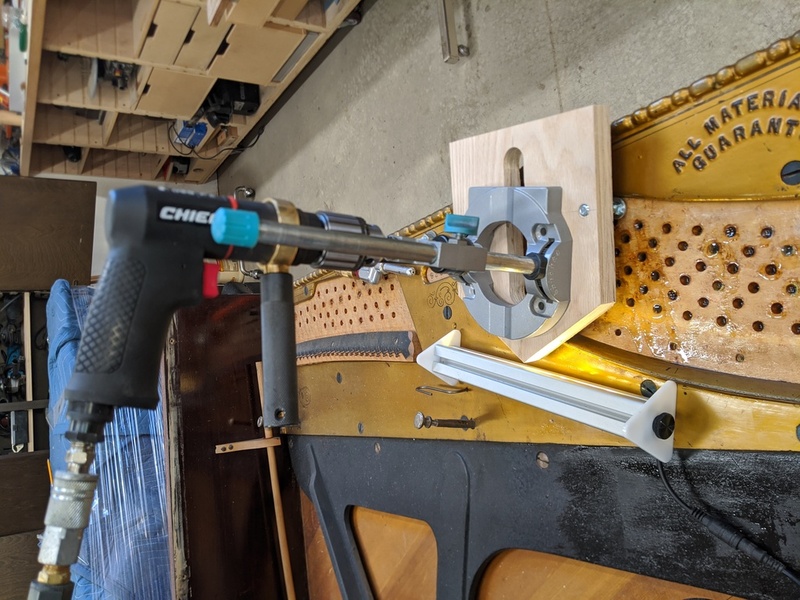
After the initial boring, the pinblock was sanded and re-lacquered. Final boring was done with a letter J drill bit (0.276″). This boring was very smooth and easy-going. I completed these bores freehand just following the initial bore. Number 2 tuning pins were tested in the first two bores with good results: smooth turning pins with 120 1b-in of torque. I’m encouraged by the result. I’ll know more later!
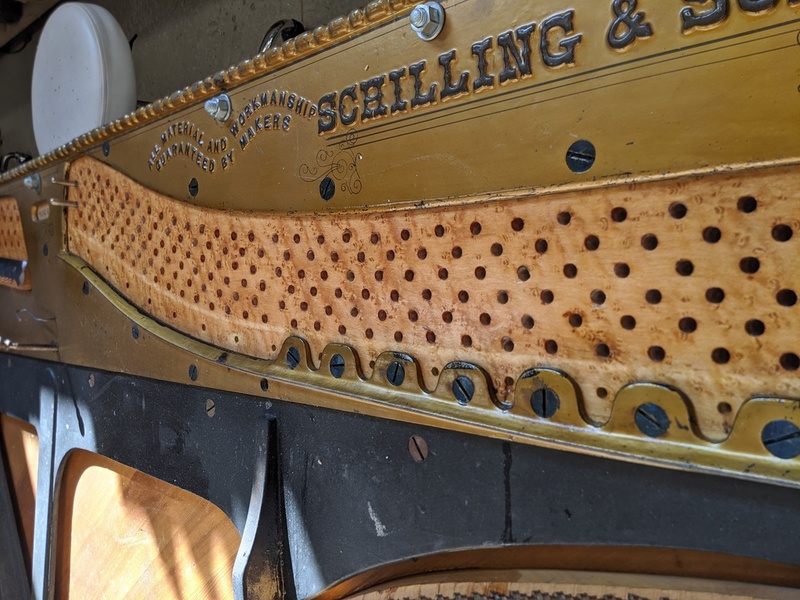
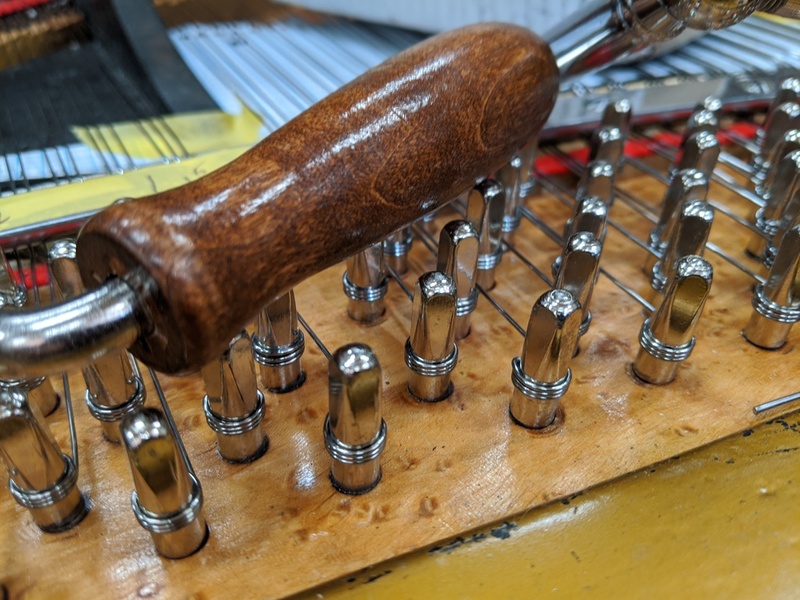
2025 2024 2023 2022 2021 2020 2019 2018 2017 2016 2015 2014 2013 2012 2011 2010 2009 2008 2007 2006 2005 2004
Comments
I welcome your comments. You do NOT need to sign in to leave a comment. If you create an account and sign in, my comment system will notify you of replies to your comment. Thanks for stopping by.--Duane McGuire

